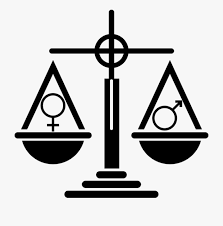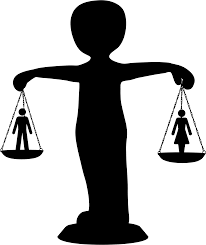
GENDER EQUALITY IN THE CONTEXT OF THE RIGHT TO WORSHIP

Gender equality is essential for human rights and a peaceful society, it is necessary for all communities to prosper. Equity for all is supported by the United Way of the National Capital Area regardless of race, gender, poverty, or ability. Gender equality can be stated as parity between every gender prevailing in society as conferred upon by the law of the land.
The father of the Indian constitution Dr. B.R. Ambedkar once stated “I measure the progress of a community by the degree of progress which women have achieved”. It is regrettable that this phrase is still used in this way today.
One of the most prevalent manifestations of social inequality is gender inequality. By perpetuating these disparities, society develops a self-replicating structure where men continue to prosper while women fall behind.
Societies in nations with stronger gender equality are more cohesive and have lower rates of antisocial behavior. Overall, a higher quality of life where anybody can achieve success both personally and professionally is provided by equality.
Now this gender inequality or disparity also prevails in the place of worship. Even religious authorities implement it under the guise of various prohibitions, practices, and customs for ages.
CAUSES OF GENDER INEQUALITY IN THE PLACE OF WORSHIP:
The main incitement of gender inequality is illiteracy. Women being ignorant of their basic fundamental rights makes them suffer from gender disparity even at the place of worship. Women still have less access to education than males do globally.
One-fourth of teenage girls between the ages of 15 and 24 will leave elementary school. 58% of people who do not complete that basic education fall into this category. Women make up about two-thirds of the world’s illiterate population.
Another main incitement of gender disparity is the traditional patriarchy that has existed in India for ages. Women are expected to submit to male authority figures and follow any customs, traditions, or cultures that society has placed on them.
When religious freedom is compromised, women suffer the most. According to the World Economic Forum, when radical ideologies (like ISIS) invade a community and impose limits on religious freedom, gender imbalance rises.
In their study, researchers from Georgetown University and Brigham Young University were also able to find a connection between religious intolerance and women’s ability to participate in the economy.
LEGAL PROVISIONS FOR GENDER EQUALITY:

Article 14 of the Indian Constitution clearly states that the State shall not within the boundaries of India, deny anyone’s right to equality before the law and equal protection under the law.
No Indian citizen shall be subjected to discrimination on the basis of religion, race, caste, gender, or place of birth, according to Article 15(1) of the Indian Constitution. This clearly depicts that according to the law of the land, no one shall be discriminated against on the basis of gender not even at the place of worship.
The most frequently cited justification for the ongoing gender discrimination in the entrance to places of worship is found in Articles 25 and 26 of our Constitution. The Courts will decide, taking into account various nuances, to what degree these Articles grant freedom to the authorities of such institutions. India already has protections in the form of Articles 25–28 because it is a secular country, as was also stated in the Preamble by the 42nd Amendment to the Constitution in 1976. These regulations unquestionably have a significant impact on establishing the legality of certain religious practices.
Article 25 ensures that everyone has the same freedom to profess, practice, and spread their faith. Article 25(1) states that the right to freedom of conscience and the freedom to profess, practice, and spread one’s faith is the basic foundations of one’s right to freedom of religion.
The structure of these rules makes it apparent that the goal is to promote gender equality in religious concerns and equality in all other sectors. Further, whether or not it is a democratically gained right, restricting entrance to places of worship to nearly half of the population denigrates democracy.
In Tilakayat Shri Govindalji Maharaj v. State of Rajasthan, the Supreme Court rendered a decision that the courts should determine whether a practice is an essential component of a religion or not based on the evidence that is available regarding the community’s conscience and the religious precepts. But under Article 25, denying a woman’s access to a place of worship violates her right to freedom of religion.
SABARIMALA CASE: INDIAN YOUNG LAWYERS’ ASSOCIATION V STATE OF KERALA

The Kerala High Court had taken into account a public interest lawsuit in 1993 against the limitations placed by the Sabarimala temple on the admittance of women between the ages of 10
and 50. The Court investigated all the religious connotations and foundations of these restrictions to ascertain whether they violated Articles 15, 25, and 26 and whether they were founded on legitimate grounds. The principles and values of other religions were also taken into account.
It was determined that while these limitations were part of a common use and were in accordance with some pertinent religious doctrines, they did not violate Articles 15, 25, and 26 of the Constitution. Thus, the Court affirmed the installation of limits.
The Supreme Court ruled, 4:1, that the practice of barring women from entering the Sabarimala shrine was unconstitutional.
But following the Supreme Court’s 2018 decision permitting women between the ages of 10 and 50 to enter the temple, there were sizable and violent demonstrations. Thus, Justice Indu Malhotra rejected the claim that the Sabarimala tradition is not unconstitutional under Article 17 of the Indian Constitution.

Technology implications are also a result of gender inequality. In response to the sexist statement made by the Devaswom chief of the Sabarimala temple in Kerala, the anti-menstrual taboo campaign “Happy to Bleed” was started. Numerous individuals have also joined this movement on social media platforms, and it has gained tremendous support from the entire nation.
In Haji Ali Dargah case whether or not a shrine or dargah has the authority to discriminate on the basis of gender depends on whether the practice is fundamental to religion. Denial of women’s access to the inner sanctum does not, therefore, constitute an important religious practice, as was the case in the Haji Ali Dargah case, because it was not the customary practice.
CONCLUSION:
Depriving half of society of the ability to worship cannot be a part of a legal covenant in the twenty-first century, stripped of all ethical and legal constraints. The only possible cause of such discrimination is patriarchy, which must be abhorred. The number of laws and court rulings may continue, but genuine change won’t occur until people’s attitudes shift and administration at houses of worship treats men and women equally.
The haj committee in their argument to the Bombay High Court cited the constant bending of women devotees who were wearing short blouses thereby exposing their private parts as a possible cause for concern if they were allowed inside the Mazaar premises.
The argument presumes the inferiority of women and it comes from menstruation in the case of Sabarimala, their risqué behavior as a congregant at Haji Ali Dargah, or their impurity in the case of Shani Shingnapur. These all also signify that it is high time for women all around the world to stand up for themselves and fight together for their rights and the only possible way for this is through education.
In addition to the legislature, the people’s active participation and multilateral organizations can help to fulfill the commitment to gender equality and non-discrimination.







